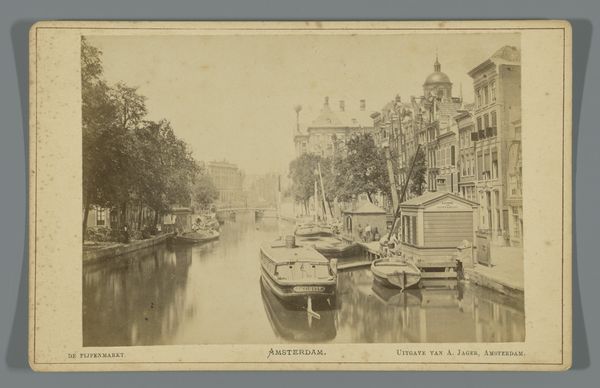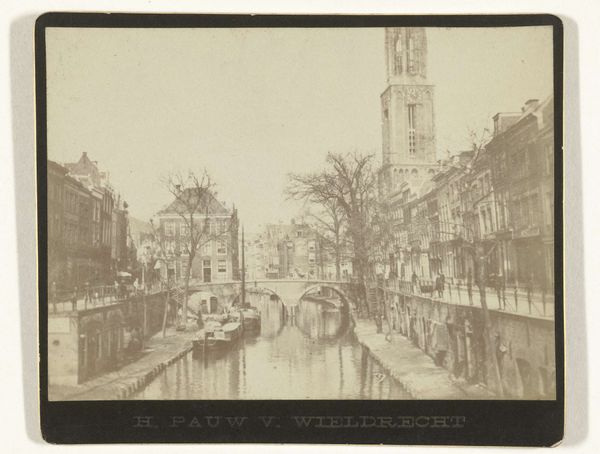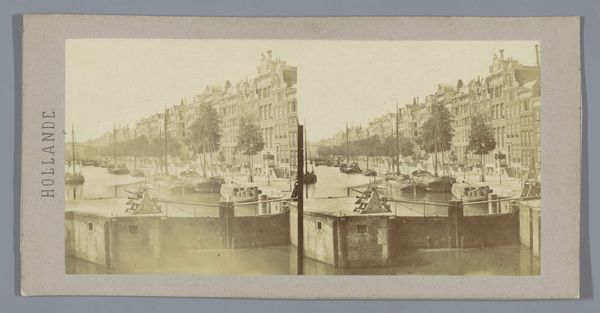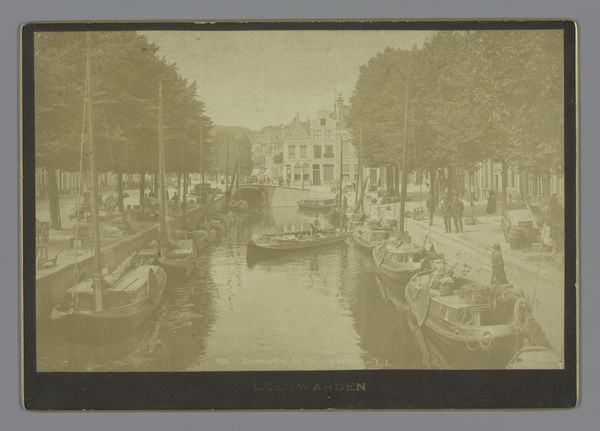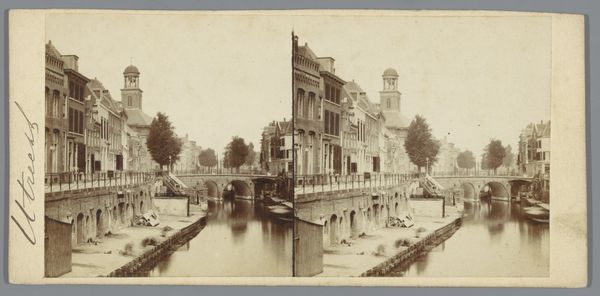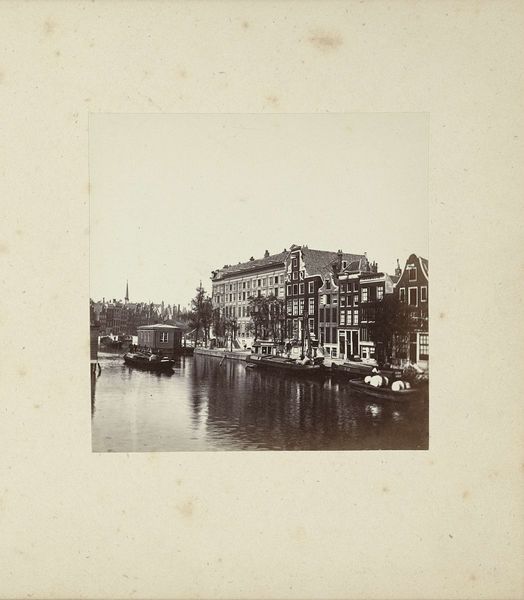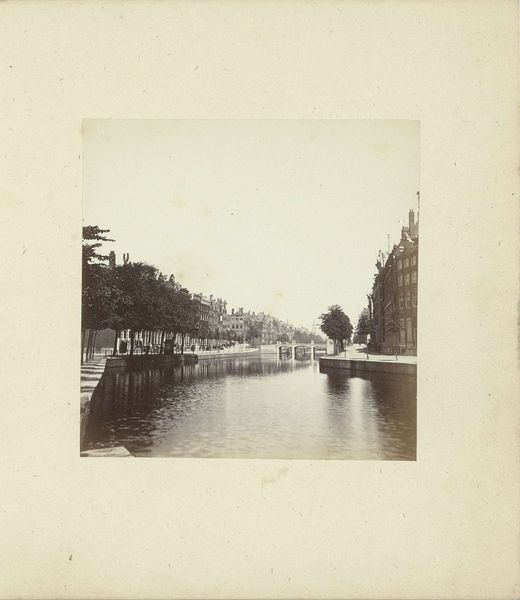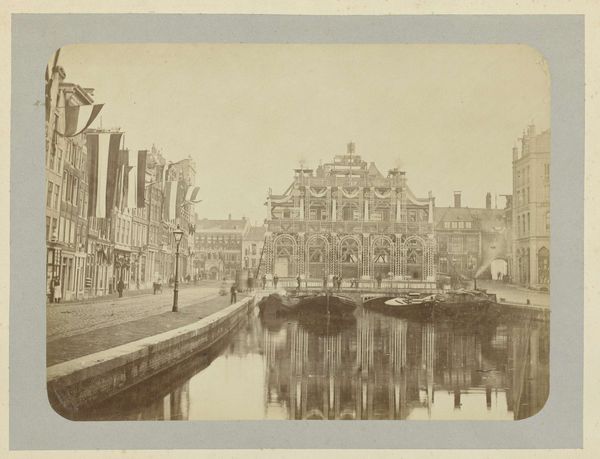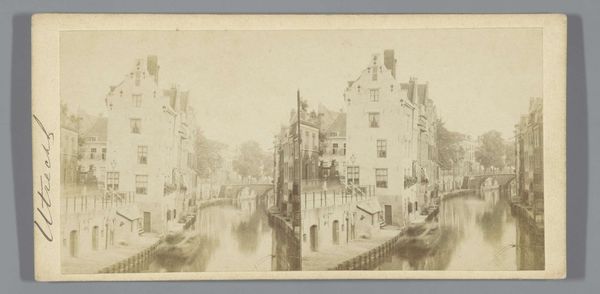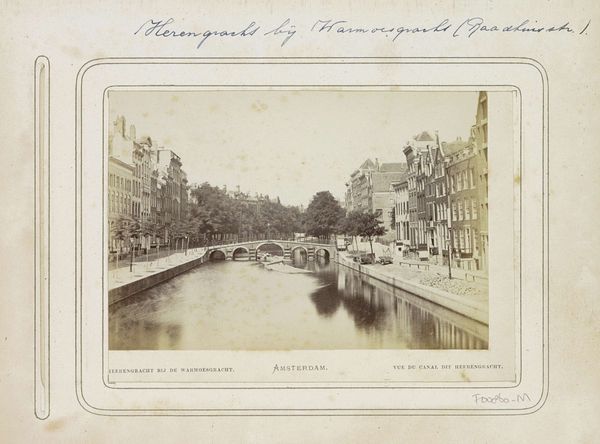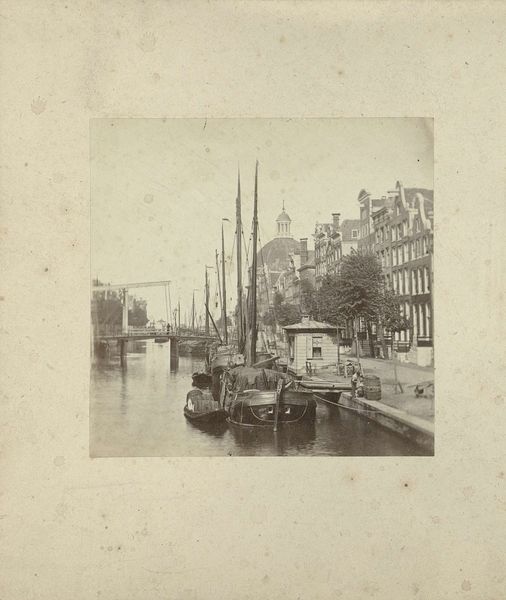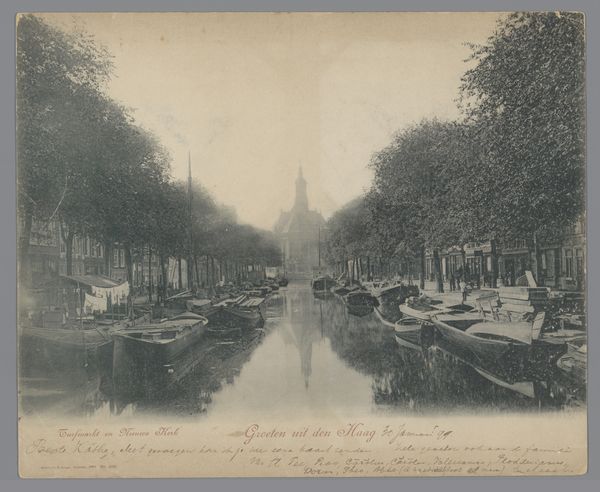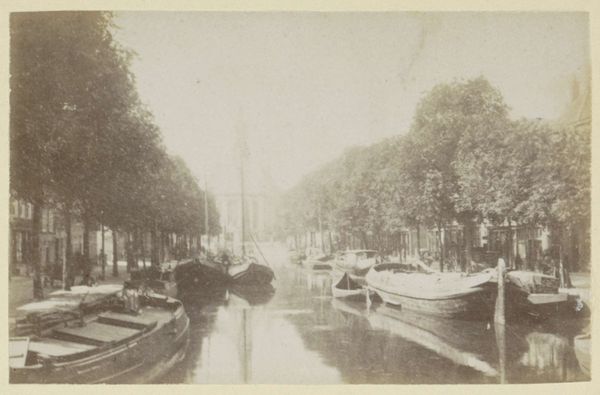
Schepen aan de Pijpenmarkt met op de achtergrond links het Koninklijk Postkantoor en rechts het Koninklijk Paleis 1860 - 1875
0:00
0:00
photography, gelatin-silver-print
#
landscape
#
photography
#
gelatin-silver-print
#
19th century
#
cityscape
Dimensions: height 107 mm, width 165 mm
Copyright: Rijks Museum: Open Domain
Editor: Here we have Andries Jager’s “Ships on the Pijpenmarkt with the Royal Post Office on the left background and the Royal Palace on the right,” a gelatin silver print dating from somewhere between 1860 and 1875, now at the Rijksmuseum. I'm immediately struck by the stillness of the scene. The water's so calm, reflecting the architecture... What catches your eye when you look at this image? Curator: What’s fascinating here is how Jager’s photograph situates the viewer in relation to Amsterdam's burgeoning public institutions, specifically the Royal Post Office and Royal Palace. Photography at this time was becoming increasingly accessible to a broader public. How does capturing these symbols of state power within a cityscape democratize them, make them more…available? Editor: That's interesting. I hadn’t thought about the role of photography in popularizing access. It feels less formal than a painting might. But does including the working boats alongside the Palace create a visual dialogue about the different classes coexisting in the city? Curator: Precisely. And think about who would consume such an image. Was this intended for local Amsterdammers, reinforcing their connection to these institutions, or perhaps for those outside the city, projecting an image of a modern, well-ordered, and functioning capital? Is it a snapshot or propaganda, or can it be both? Editor: It’s really interesting to consider that photography wasn't just about documenting a scene, but about shaping perceptions and conveying ideas about power and progress. Curator: Exactly. Analyzing the photograph as a historical object helps us uncover how the public role of art evolves. I mean, what’s a photograph hanging in the Rijksmuseum, if not art sanctioned by the establishment? Editor: This has changed my whole perspective. I'm not just seeing a cityscape now, but a carefully constructed representation of 19th-century Amsterdam, reflecting social and political ideas of the time.
Comments
No comments
Be the first to comment and join the conversation on the ultimate creative platform.
